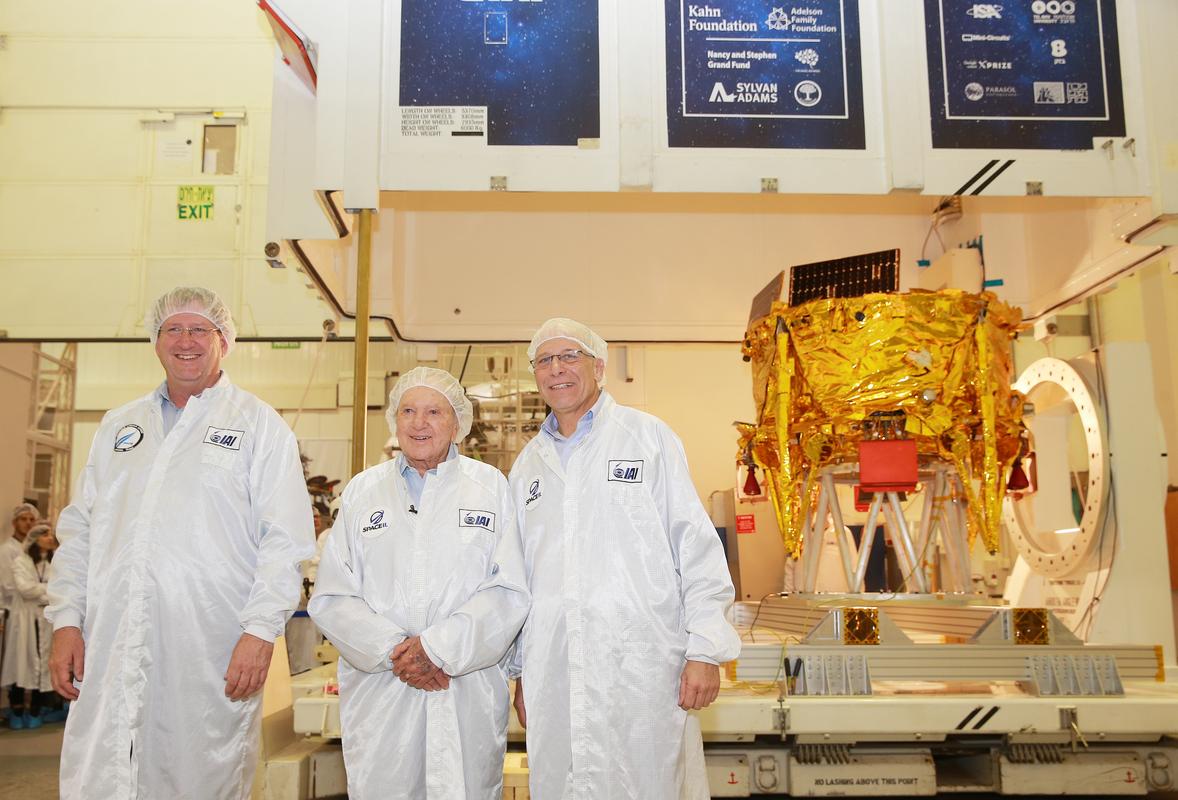Israel's 1st Moon Lander Arrives in Florida for Launch on a SpaceX Rocket
The first privately-developed lunar spacecraft has arrived in Florida in preparation for its launch next month. The mission will be Israel's first mission to the moon.
The nonprofit SpaceIL and the government-owned corporation Israel Aerospace Industries (IAI) shipped the lunar spacecraft, named Beresheet, from Israel to Florida on Jan. 18. The spacecraft is scheduled to launch from Florida's Cape Canaveral Air Force Station as a secondary payload on a SpaceX Falcon 9 rocket in mid-February, according to a statement from SpaceIL.
"After eight years of hard work, our dream has come true: We finally have a spacecraft," Ido Anteby, SpaceIL CEO, said in the statement. "Shipping the spacecraft to the United States is the first stage of a complicated and historic journey to the moon. This is the first of many exciting moments, as we look forward to the forthcoming launch in Cape Canaveral." [Moon Rush: These Companies Have Big Plans for Lunar Exploration]
"The transporting of Beresheet is a unique challenge since this is a once-in-a-lifetime mission and there is no backup plan — this spacecraft must arrive safely," Eyal Shitrit, IAI director of logistics, said in the statement.
Beresheet will now undergo final tests at Cape Canaveral in preparation for launch. If all goes according to plan, the lunar landing will make Israel the fourth country — after Russia, the United States and China — to put a spacecraft on the surface of the moon.
SpaceIL's mission to the moon began as part of the Google Lunar X Prize competition, which ended in January 2018. The competition originally challenged privately funded teams to design and send a robotic spacecraft to the moon, move the craft 1,640 feet (500 meters) and have it beam high-definition photos and video back to Earth.
While the Google Lunar X Prize competition ended with no winner, SpaceIL continued with its mission to land a spacecraft on the moon.
Breaking space news, the latest updates on rocket launches, skywatching events and more!
"The excitement we all feel today will only intensify moving forward, and I can't wait for the next milestone," Morris Kahn, SpaceIL president, said in the statement. "This is only the beginning."
Follow Samantha Mathewson @Sam_Ashley13. Follow us @Spacedotcom, Facebook and Google+. Original article on Space.com.

Samantha Mathewson joined Space.com as an intern in the summer of 2016. She received a B.A. in Journalism and Environmental Science at the University of New Haven, in Connecticut. Previously, her work has been published in Nature World News. When not writing or reading about science, Samantha enjoys traveling to new places and taking photos! You can follow her on Twitter @Sam_Ashley13.


